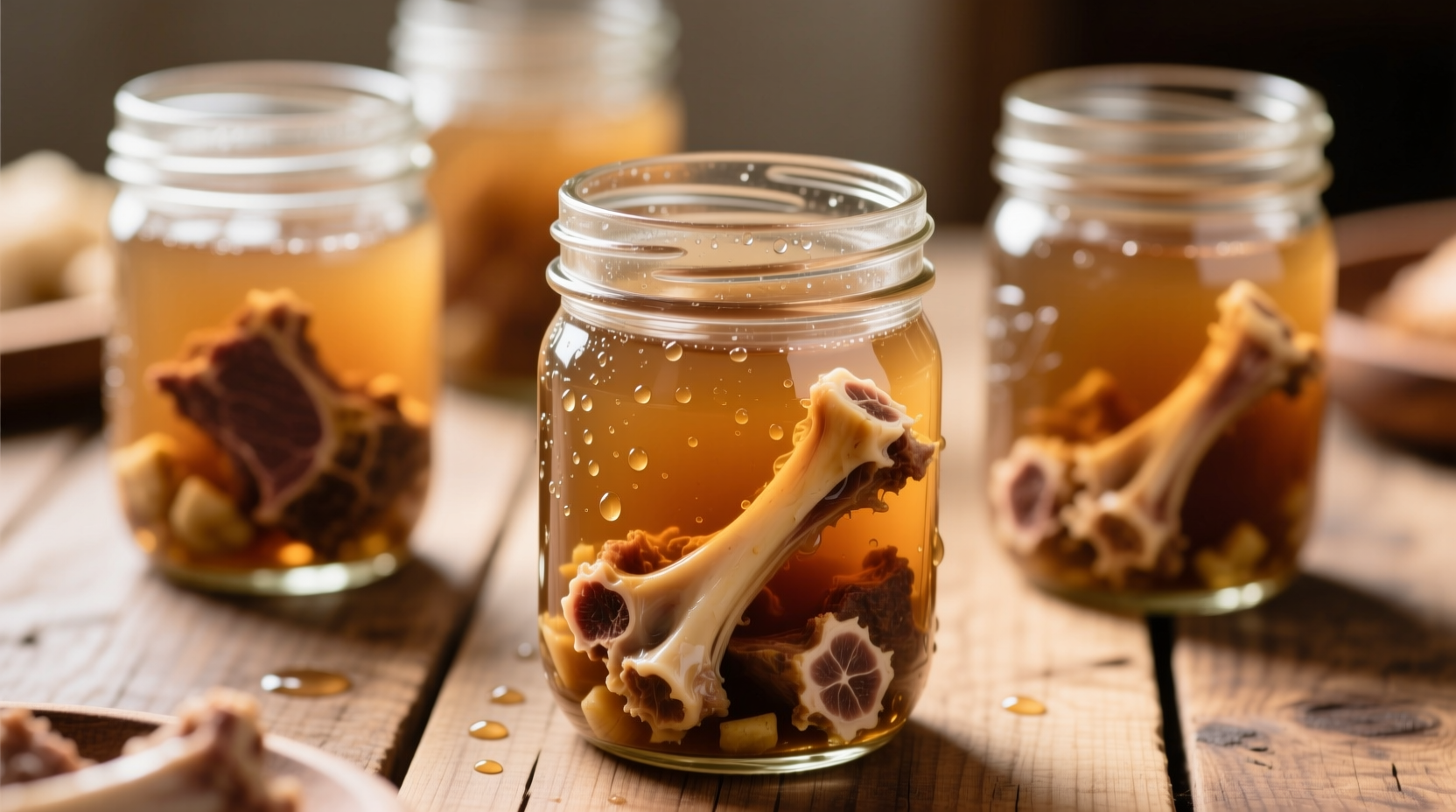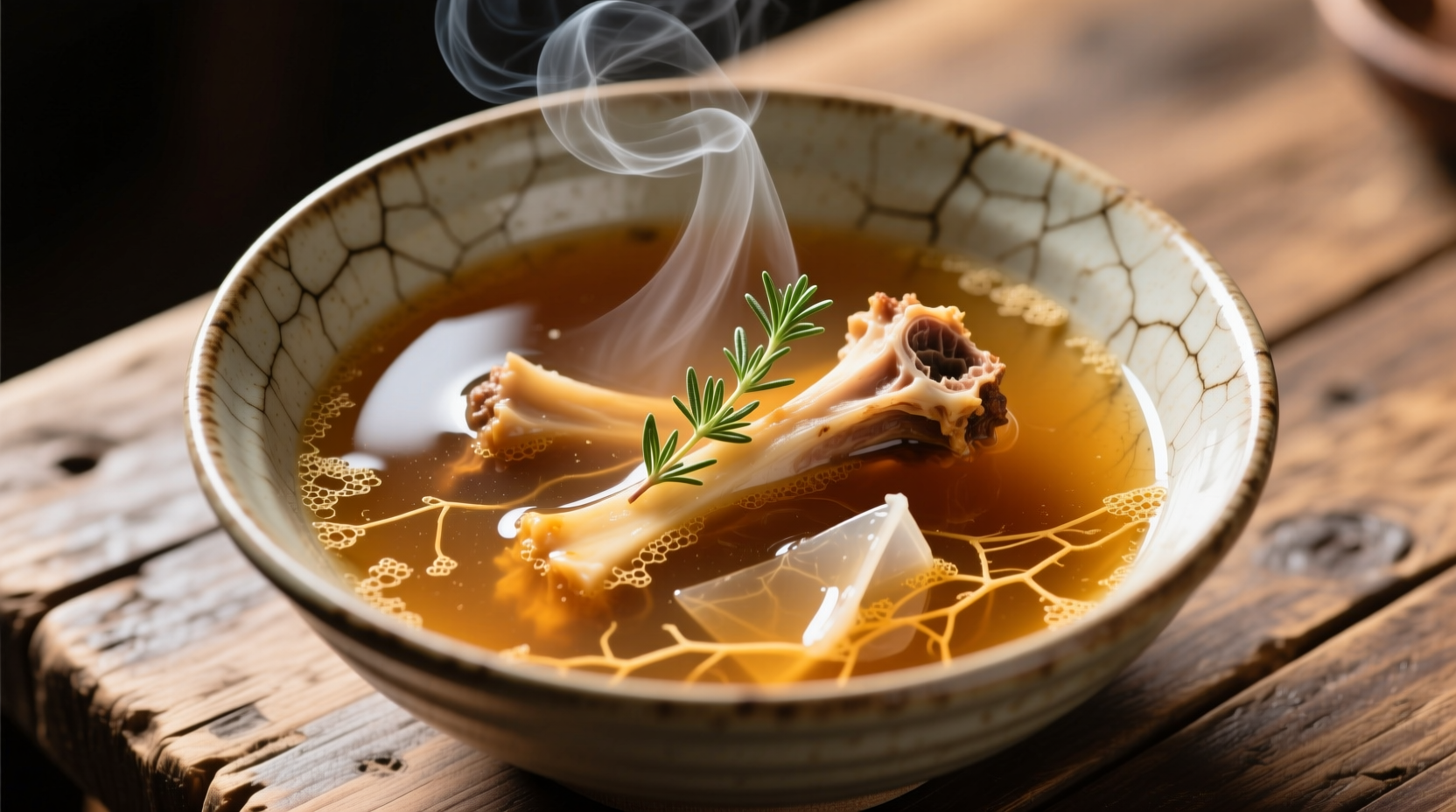If you've ever wondered what does bone broth taste like compared to regular broth, you're not alone. Many home cooks and health enthusiasts find themselves curious about this culinary staple's distinctive flavor before trying it. Unlike store-bought broth that often tastes thin and one-dimensional, properly made bone broth offers a multi-layered sensory experience that forms the foundation of countless traditional cuisines worldwide.
The Core Flavor Profile Explained
Bone broth's signature taste comes from the slow extraction of collagen, marrow, and minerals during extended simmering. When bones—particularly those rich in connective tissue like knuckles, feet, and joints—are cooked for 12-24 hours, they release gelatin that creates both the characteristic mouthfeel and flavor depth.
Professional chefs describe bone broth's taste using these key characteristics:
- Umami richness - The dominant flavor note, more pronounced than in regular stock
- Meaty depth - Not overpowering, but a subtle background note of the animal source
- Gelatinous texture - Creates a luxurious mouthfeel that coats the tongue
- Natural sweetness - Especially when bones are roasted first
- Light saltiness - Only if seasoned; unseasoned versions are relatively neutral
How Preparation Methods Change the Flavor
The exact bone broth flavor profile description varies significantly based on preparation techniques. Understanding these variables helps set proper expectations:
| Preparation Method | Flavor Impact | Best For |
|---|---|---|
| Roasted bones | Deeper, caramelized notes with subtle sweetness | Beef and lamb broths |
| Raw bones | Cleaner, more delicate flavor profile | Chicken and fish broths |
| Acidic addition (vinegar) | Enhanced mineral extraction, slightly tangy note | Nutrient-focused preparations |
| Vegetable additions | Complex herbal notes, balanced sweetness | Most culinary applications |
Flavor Evolution During Cooking
Understanding how bone broth taste develops over time helps explain why proper preparation matters. Food science research from the Culinary Institute of America shows distinct flavor phases:
- First 2-4 hours: Initial extraction of water-soluble proteins creates a light, somewhat bland liquid
- 8-12 hours: Collagen begins converting to gelatin, adding body and subtle meaty notes
- 18-24 hours: Maximum flavor development with deep umami and characteristic richness
- Beyond 24 hours: Risk of bitter notes developing as certain compounds break down

Common Taste Misconceptions
Many people searching does bone broth taste good have encountered misleading information. Let's clarify some common misconceptions:
Misconception: Bone broth tastes strongly of bones or has a "bony" flavor
Reality: Properly made bone broth should never taste metallic or "bony." The bones serve as a vehicle for flavor extraction, not the primary flavor source.
Misconception: All bone broth tastes identical regardless of animal source
Reality: Different bones create distinct profiles—beef bone broth offers deeper richness while chicken provides more delicate notes. According to USDA FoodData Central research, the amino acid composition varies significantly between animal sources, directly impacting flavor development (USDA FoodData Central).
How Bone Broth Compares to Other Liquid Bases
Understanding the bone broth vs regular broth taste difference helps contextualize its unique qualities:
- Store-bought broth: Often contains salt, preservatives, and MSG; thinner body; one-dimensional flavor
- Homemade stock: Made from bones but cooked for shorter time (3-6 hours); less gelatin; lighter flavor
- Consommé: Clarified broth; extremely clean flavor but lacks body and depth of bone broth
- Bone broth: Extended cooking time; rich umami; distinctive gelatinous texture; complex flavor layers
Contextual Taste Expectations
Your expectations for what homemade bone broth taste like should consider its culinary application. The same broth might taste different depending on how you use it:
- As a standalone beverage: Should be well-seasoned with herbs and salt to enhance natural flavors
- In soups and stews: Provides foundational flavor that blends with other ingredients
- As a sauce base: Contributes body and richness without overpowering other elements
- Cooled and set: The gelatinous texture becomes apparent, indicating proper collagen extraction
Professional kitchens often adjust seasoning specifically for the intended use—what tastes perfect in a soup might need additional seasoning when consumed alone.
Practical Tips for Optimal Flavor
Whether you're making your first batch or refining your technique, these evidence-based tips ensure the best bone broth flavor profile description matches reality:
- Skim regularly: Remove impurities during the first hour for cleaner flavor
- Balance acidity: A splash of apple cider vinegar (1-2 tbsp per gallon) helps extract minerals without making broth taste sour
- Season at the end: Salt concentration increases as liquid reduces—season after cooking
- Cool properly: Rapid cooling preserves flavor integrity and prevents off-notes
- Store correctly: Refrigerated broth maintains flavor for 5-7 days; frozen retains quality for 6 months
Troubleshooting Common Flavor Issues
Even experienced cooks sometimes encounter what does bone broth taste like when something's wrong situations. Here's how to identify and fix common problems:
Bitter taste: Usually from overcooking (beyond 24-36 hours) or using too many certain bones (like too many joints). Solution: Add a small piece of kombu seaweed during last hour of cooking to balance bitterness.
Flat or bland flavor: Insufficient cooking time or wrong bone selection. Solution: Add roasted bones to existing batch and simmer additional 6-8 hours.
Metallic notes: Often from using reactive pots (aluminum) or over-acidification. Solution: Transfer to non-reactive pot and add small amount of sugar to counter metallic notes.
Remember that what does bone broth taste like naturally varies between batches—this variation is normal and reflects the artisanal nature of the process.
Developing Your Bone Broth Palate
Tasting bone broth properly requires attention to its full sensory profile. Follow this professional tasting sequence:
- Visual inspection: Look for clarity and golden hue (for chicken) or deep brown (for beef)
- Aroma evaluation: Swirl gently and inhale—should detect savory, meaty notes without sourness
- Texture assessment: Cool slightly and feel the mouth-coating quality as it coats your spoon
- Flavor progression: Note initial taste, mid-palate development, and finish
This systematic approach helps you better understand how to describe bone broth taste accurately and identify quality differences between batches.
Final Thoughts on Bone Broth Flavor
Understanding what does bone broth taste like ultimately comes down to appreciating its role as a culinary foundation rather than a standalone star. Its magic lies in how it enhances other ingredients while contributing its own subtle complexity. When properly made, bone broth should taste deeply savory with a satisfying mouthfeel that transforms simple dishes into memorable meals.











 浙公网安备
33010002000092号
浙公网安备
33010002000092号 浙B2-20120091-4
浙B2-20120091-4